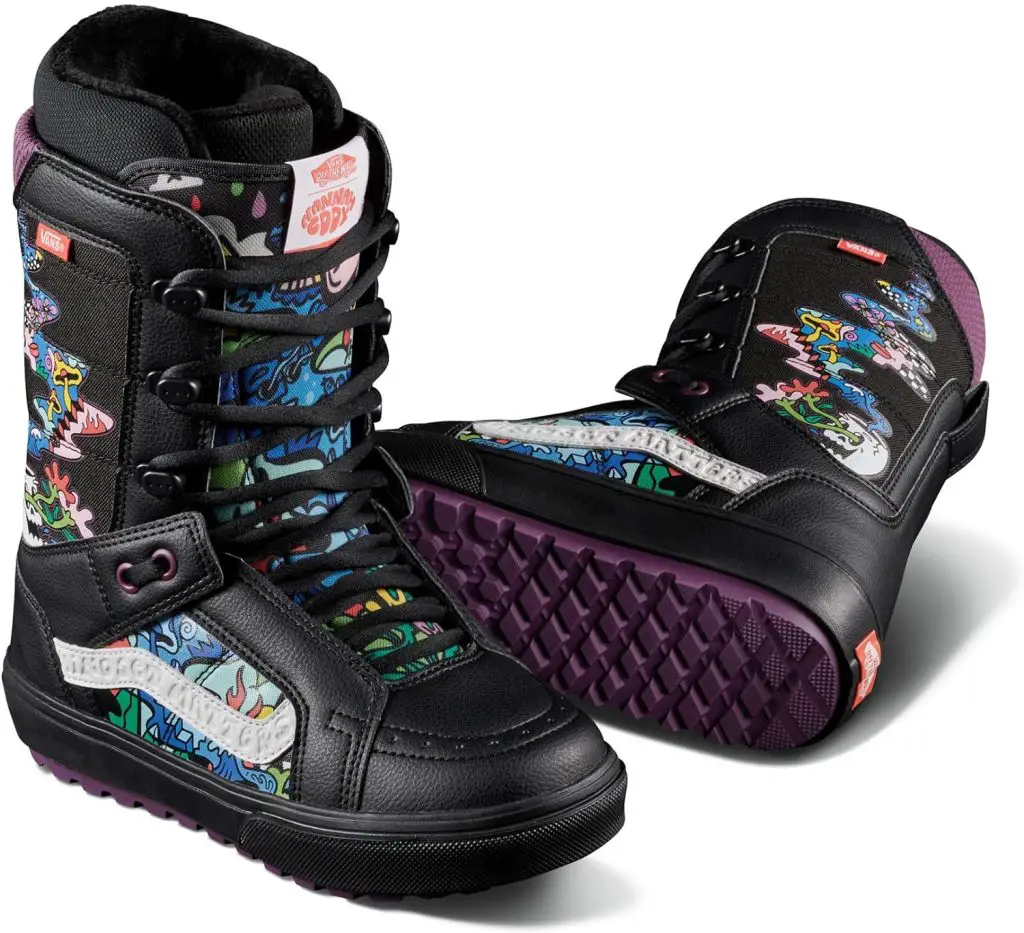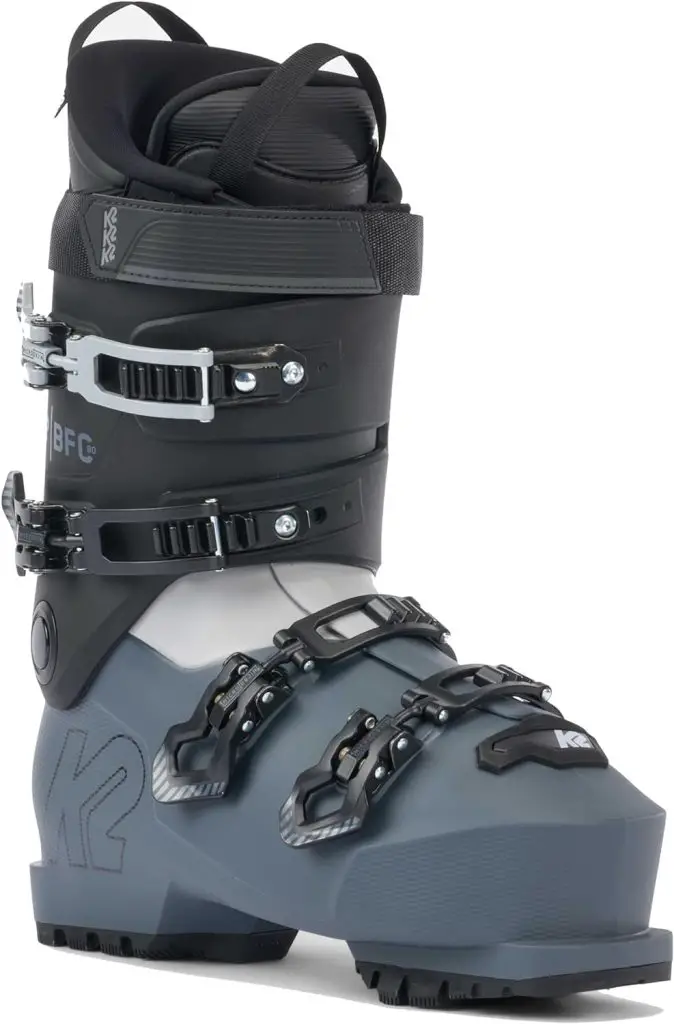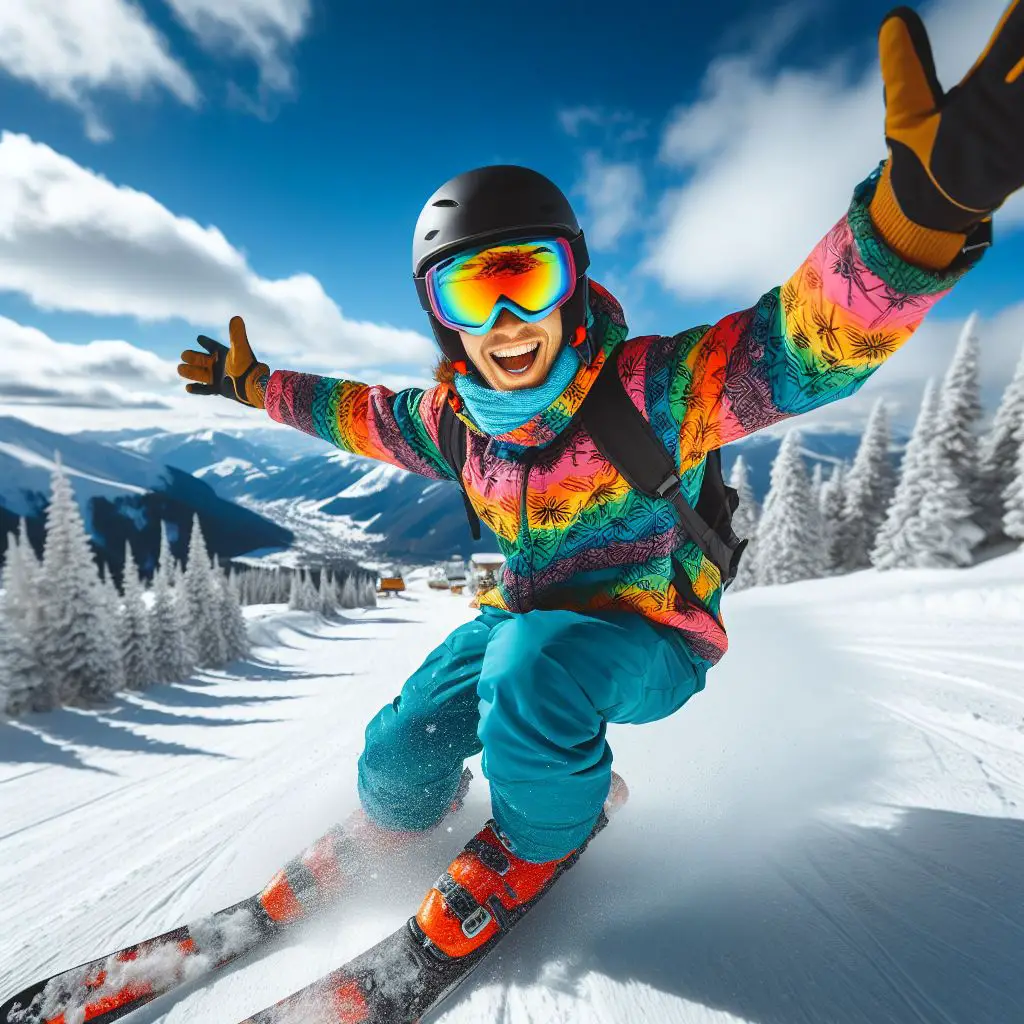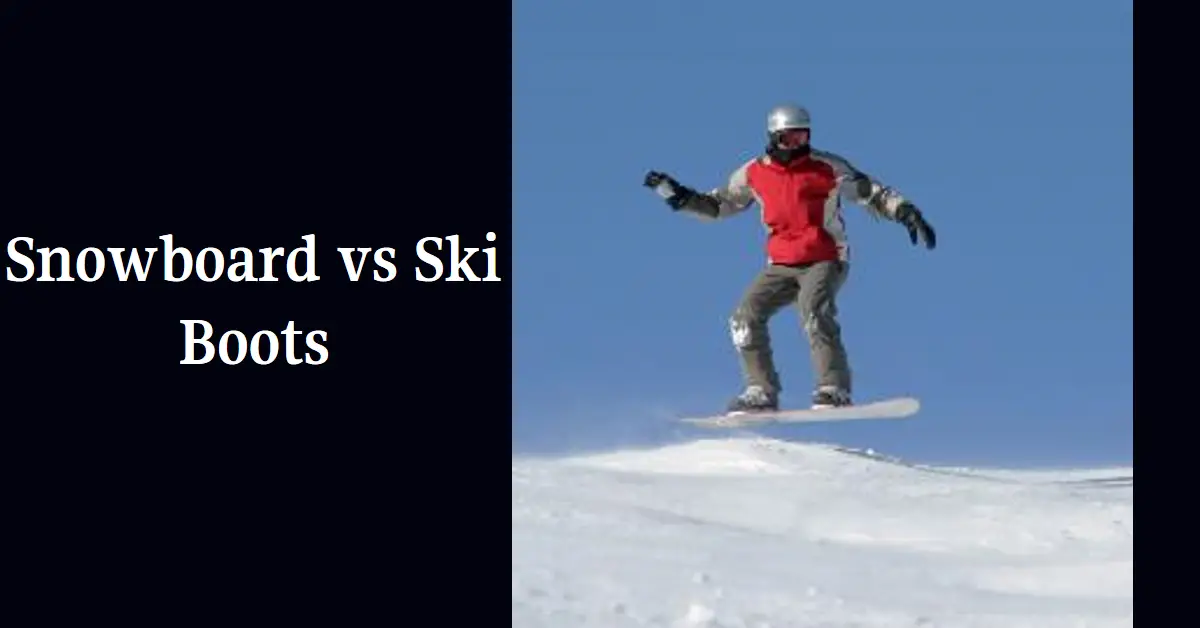Table of Contents
Introduction
For snow sports enthusiasts, selecting the right footwear is essential. Snowboard and ski boots perform differently to accommodate each sport’s unique needs. Understanding these key differences helps riders determine their best option.
Through examining critical factors like flexibility, shock absorption, and forward lean, we contrast snowboard and ski boots to equip you to decide between these central snow staples. Utilize this definitive comparison guide to discover your ideal snow footwear match.
Snowboarding Boots
Before pitting boards against skis, let’s survey the key qualities of each footwear type, beginning with snowboard boots.

Snowboard Boots Flex Rating
A vital metric called “flex rating” distinguishes stiffness levels among snowboard boot models. This index categorizes boots on a 1-10 scale – 1 denoting maximum soft flexibility, 10 marking the most rigid stiffness. Most riders opt for medium flex ratings around 5. However, weight, ability level, riding style, and terrain preferences also sway ideal flex ratings.
Flex Rating Overview:
- 1-3: Ultra-soft flex for beginners and freestylers
- 4-6: Medium flex ideal for most recreational riders
- 7-10: Stiffest Flex is great for experts charging high speeds
See the following table summarizing core factors influencing ideal snowboard boot flex ratings:
| Factor | Lower Flex Rating | Higher Flex Rating |
|---|---|---|
| Weight | Lighter | Heavier |
| Ability | Beginner | Advanced |
| Style | Freestyle tricks | Downhill charging |
| Terrain | Park, powder | Groomers, steeps |
This flex framework empowers you to zone in on a boot meeting your specific needs.
Lacing Systems
Snowboard boots feature various lacing configurations from basic setups to quick-pull designs allowing micro-fit adjustments. Most utilize combo systems with both traditional laces and an inner boom harness for a secure fit. Customizing tightness zone-by-zone diversifies comfort and control.
Liners
Liners cushion your feet against impacts while ensuring a locked-in fit. Higher-end boots boast molded liners conforming to your feet’s exact contours. Removable liners enable customizing insulation warmth too.
Footbeds
Many modern snowboard boots incorporate customized footbeds supporting natural foot positioning. These Ortholite beds enhance comfort, impact absorption, and stability through aligned support.
Soles
Boot soles transfer energy from rider to board. Midsole cushioning absorbs vibrations from snow inconsistencies. The outsoles then grip bindings for control, with some models featuring a skate shoe-style cupsole design.
Snowboard boots also commonly integrate the following elements:
- Heat-moldable shells and liners
- Shock-absorbing heels and toes
- Reflective/decorative touches
- Waterproofing and breathability
Ski Boots

Forward Lean
A distinguishing ski boot characteristic is substantial forward lean, angling shins inward by up to 15 degrees. This forces knees and ankles toward the boots’ tongues, enabling effective pressure transfer to the edges. Adjustable forward lean gives added control tweaking this angle.
Flex Rating
Like snowboard boots, ski boots utilize a flex rating index across makes and models. However, the ski rating spectrum differs slightly, ranging from 50-120.
Flex Rating Guide:
- 50-70: Very soft to soft flex for new skiers
- 80-100: Medium flex ideal for intermediate skiers
- 110-120: Stiffest flex for advanced to expert skiers
The rating again adjusts to skier’s ability level, size/strength, terrain, and skiing discipline. Freestyle skiers benefit from softer boots while disciplined downhill racers require ultra-stiff models.
Lacing
Many ski boots opt for simple speed laces pulled quickly into place. However numerous adjustable lacing zones increasingly appear for micro-level customization. Dials also enable easily adjusting forward lean angles.
Footbeds
Custom footbeds help align skiers properly, though these remain less common in ski boots than snowboard options. Opt for adjustable beds when possible.
Soles
Ski boot soles also prioritize grip and impact absorption but differ by being compatible with ski bindings mounted at the toe and heel. Materials like rubber and plastic allow smooth flexing while navigating the terrain.
Additional Ski Boot Features:
- External shell tongue design
- Shock absorbing liners
- Removable liners
- Insulative fabrics
- Heel/toe pieces
Snowboard vs Ski Boots: Key Factor Comparisons

Flexibility – Snowboard boots dominate flexibility with softer shells enabling free ankle mobility to handle jumps and tricks. Ski boots limit movement relying on stiffness for downhill control.
Shock Absorption – Both integrate shock-diffusing beds, liners, and materials, but snowboard boots edge out ski boots through ultra-cushioning designs shielding feet from jarring landings.
Forward Lean – Ski boots feature fixed forward leans up to 15 degrees not present in snowboard boots allowing upright riding. This tilt aids downhill control.
Footing – Snowboard boots secure both toes and heels while ski boots lock heels only to enable toe release when hitting jumps.
Fit – Ski boots often run wider than slim snowboard boots contoured to feet. But snowboard liners overall achieve a tighter, precise fit.
Lacing – Both utilize multi-zone lacing for micro adjustability. But snowboards lead simplicity through single boom tightening harness systems.
Traction – Snowboard soles grip bindings consistently while ski boot soles adapt traction for downhill environments.
Versatility – Snowboard boots work seamlessly across most terrain from groomers to powder while ski boots focus on downhill utility.
Longevity – Quality snowboard boots withstand 50+ days of riding. Ski boots last at least 100+ days before packing out.
Price – Mid-range snowboard boots cost $200-$400. Ski boots start around $500 for advanced performance quality.
How to Select the Right Option
Beyond contrasting technical elements, applying the following guide leads you to the boots delivering your desired snow experience:
Snowboard Boots If:
- You snowboard as a beginner or enthusiast wanting softer flex allowing free movement over various terrain
- Seeking looser fit enabling agile mobility to land jumps/tricks smoothly
- Prioritizing shock absorption protecting from harsh impacts
- Want simpler lacing and break-in than precision ski boots
- Plan to ride switch or downhill with upright stability
Ski Boots If:
- An intermediate, advanced or expert skier wanting response and control carving down slopes
- Need forward lean and stiffness to fully pressure edges when turning
- Using bindings not releasing toes to navigate moguls and downhill terrain quickly
- Seeking narrow performance fit over looser snowboard comfort
- Looking for longer-term investment holding up to 100+ days
Conclusion
When embarking on your snow sports journey, few gear choices influence experience more than selecting snowboard or ski boots. Delving into their technical variations around flexibility, shock absorption, traction, and fit reveals how to design tailored to support each sport’s unique demands. Cross-comparing them based on your ability, discipline, and priorities dials in the best footwear fit. Whether you live for downhill domination, kickers and rails, dream of backcountry powder, or just want comfortable cruising, picking boots playing to those strengths transforms your snow days ahead. So strap into the right boots and shred on!
